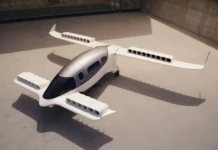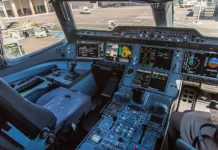The FAA will discontinue the paper application for FAA medical certification. After Oct. 1, 2012, you must use FAA Form 8500-8 application, otherwise known as “FAA MedXpress.” That virtual form was introduced in 2007 and “has evolved considerably, streamlining FAA medical certification into a much more efficient and seamless process,” says the FAA. More than 400,000 pilots fill out one of these forms each year, so it’s understandable a digital system might save a few bucks.
Euro crisis be damned, interesting things are afoot in Austria and Slovenia. Rotax unveiled a fuel-injected version of the 100-HP 912 that powers the vast majority of LSAs. The engine is on the assembly line and will be shipping in several LSAs by summer. Fuel savings could be better than 20 percent in cruise over a carbureted 912. Diamond aircraft has reworked the diesel-powered (Austro) DA-42 to cruise at 185 knots burning under 11 GPH on both engines combined. The wide-body DA-50 airframe is also becoming a diesel twin called, logically enough, the DA-52. Pipistrel Aircraft’s Panthera should fly soon, so we’ll see if they will approach their goal of 200 knots on 10 GPH.
Lycoming has applied for multiple families of Lycoming engines to legally use unleaded avgas, UL 91. The company has submitted for 233-, 235-, 320- and 360-series engines. Certain 540-series engines could follow. The fuel is an avgas, not a mogas, and conforms to aviation standards. However, in the U.S. anyway, owners may need to get a second approval for the airframe to run UL 91, as well as find the stuff. Lycoming admits this is not a solution that will solve the lead problem for everyone and continues its other efforts for a real 100LL replacement.
In its annual aviation forecast, released last week, the FAA said it expects the numbers of active general aviation aircraft to continue to decline slowly, but by 2025 the numbers should start to gradually increase. Turboprops and jets will fare better than piston aircraft, with continuing growth of about three to four percent per year. The outlook is also good for LSAs, where the fleet should grow about four percent per year until 2013, then about two percent yearly until 2032. Life is good for unmanned aircraft systems: The FAA predicts roughly 10,000 active commercial UASs in five years. Where do they get these numbers? Probably the same place they got the budget projections for NextGen. We’re all doomed.
Just in case your copy of iPad Pilot Monthly hasn’t arrived yet, here’s a nutshell update of what’s hip in the cockpit tablet world: ForeFlight and Sporty’s have teamed up to offer a $799 single-box solution for ADS-B in-flight weather and GPS position that can connect multiple iPads. AnywhereMap has released a version of its software called Freedom that runs on iOS, Android and Windows tablets. Garmin has rebranded PilotMyCast into an updated app that also runs on iOS and Android. WingX has added virtual glideslopes and other new terrain warnings, iFlightPlanner is now out on the iPad and several companies have new iPad training solutions to kill those hours weathered-in at the FBO. After you finally figure out which app to use, maybe you’ll still have some brainpower left to actually fly.
FAA policy change says that all aircraft should have their transponders in the “ON” or “ALT” position while taxiing on airport grounds … Aeronav now says charges for digital reproductions of FAA charts will be delayed for at least several months … JetBlue captain subdued by passengers (who happened to be off-duty prison guards) after he behaved erratically and a flight attendant asked for help … Diemech unveils 125-pound, 240-HP turbine for GA … Red Bull Stratos project makes successful test skydive from 71,850 feet … New legislation sets shorter timeline for some NextGen milestones … For breaking news in general aviation, log on to www.avweb.com.




